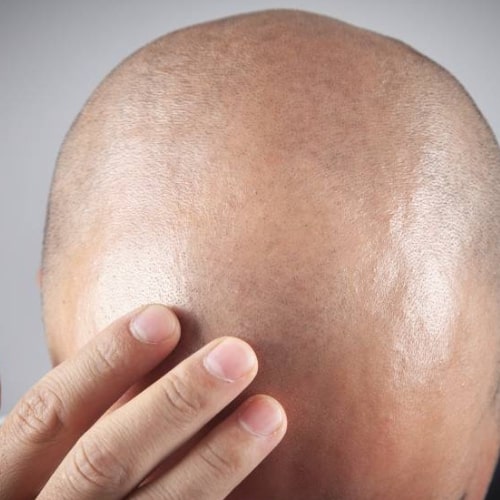Haartransplantation
Die Haartransplantation ist ein chirurgischer Eingriff, bei dem Haarfollikel aus einem dichten Bereich des Körpers in eine kahle oder dünner werdende Stelle verpflanzt werden. Sie ist eine langanhaltende und wirksame Lösung gegen Haarausfall und sorgt für ein natürlich aussehendes, volleres Haar.
Füllen Sie unser Informationsformular aus, um detaillierte Informationen zu erhalten, und wir stellen den Kontakt zu unseren Vertragsärzten her.

Haartransplantation
FUE Hair Transplant
FUE (Follicular Unit Extraction) hair transplant is a modern surgical technique where individual hair follicles are extracted one by one from a donor area. This method is known for its minimally invasive nature and for leaving no linear scar, resulting in a more natural-looking and quicker recovery.
DHI Hair Transplant
DHI (Direct Hair Implantation) is a hair transplant technique that uses a specialized implanter pen to directly implant hair follicles into the recipient area. This method provides surgeons with precise control over the depth, angle, and direction of each hair follicle, often resulting in a highly dense and natural-looking outcome.
Sapphire Hair Transplant
Sapphire Hair Transplant is a variation of the FUE technique where the surgeon uses a special blade made from a sapphire gemstone to create the incisions in the recipient area. This method is highly valued for its precision, which minimizes tissue damage and allows for a denser hair transplant, ultimately leading to a faster healing process and a more natural-looking result.
Beard Transplant
A beard transplant is a surgical procedure that restores or adds density to a man's facial hair. It involves transferring hair follicles, typically from the back of the head, to the chin, cheeks, or mustache area to create a fuller and more defined beard.
FAQ for Hair Transplant
What is the recovery process like and what should you be careful about after a hair transplant?
The recovery process after a hair transplant usually starts with slight swelling and sensitivity for the first few days. It’s very important to treat the transplanted area with great care for the first 10 days and wash it with the special lotions and shampoos your doctor recommends. After about two weeks, the scabs fall off and the transplanted area returns to its normal appearance, while the shock shedding phase begins.
What are the requirements to be an ideal candidate for a hair transplant?
To be an ideal candidate for a hair transplant, your hair loss must first be stable. You should have a sufficient number of healthy, high-quality hair follicles in your donor area (typically at the back of the head). It’s also important to be in good general health and not have any chronic illnesses. Your doctor will evaluate these factors to determine if you are a suitable candidate.
How long does it take to see the final results of a hair transplant?
It typically takes several months to see the final results of a hair transplant. After the initial shedding phase, new hair growth usually begins around 3-4 months post-surgery. The most significant growth is visible at 6-9 months, with the final, full results becoming apparent around 12-18 months after the procedure.
